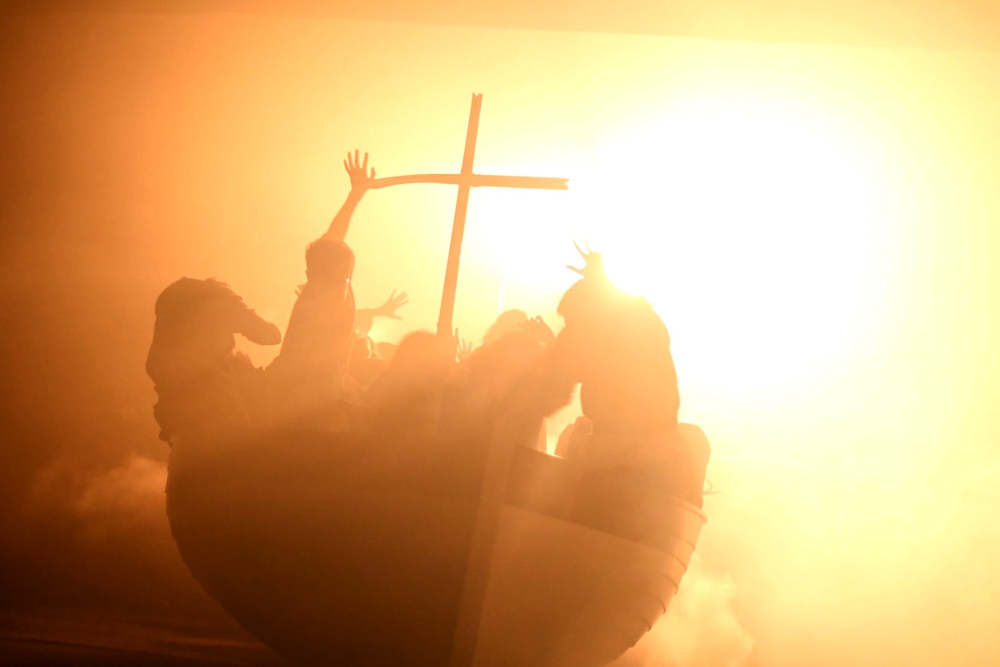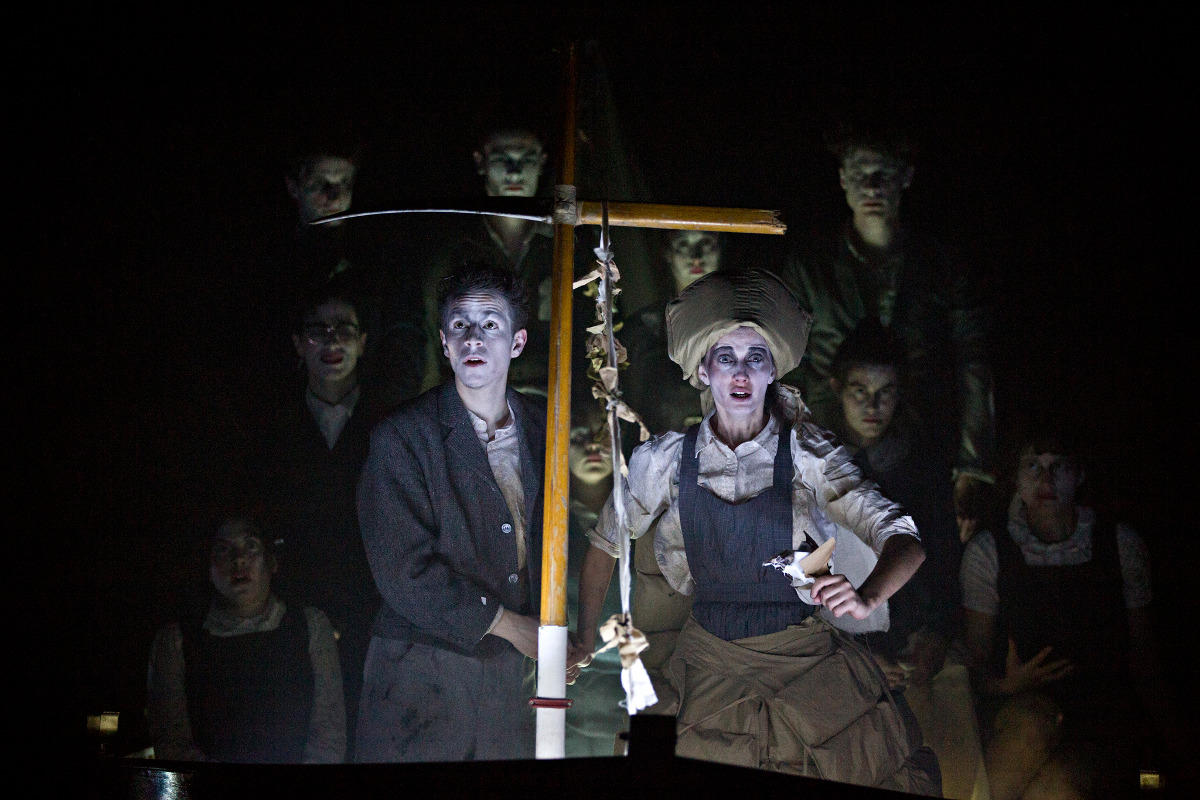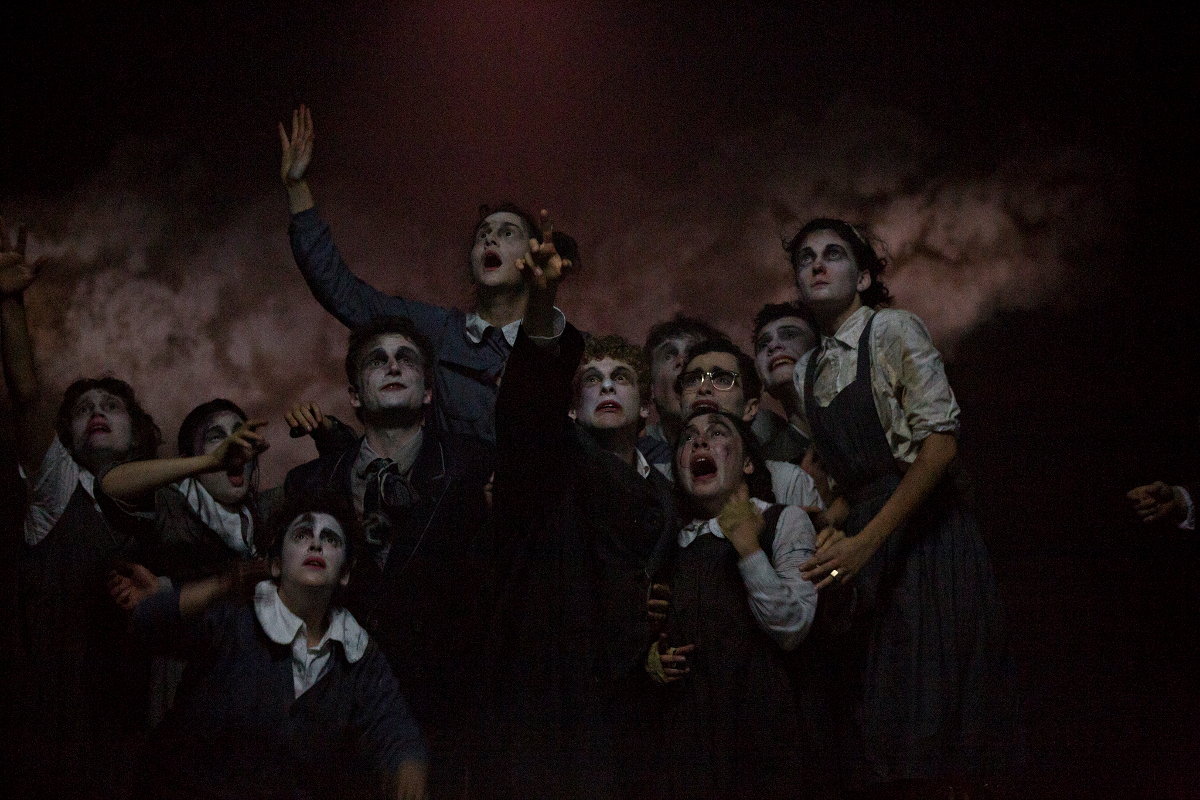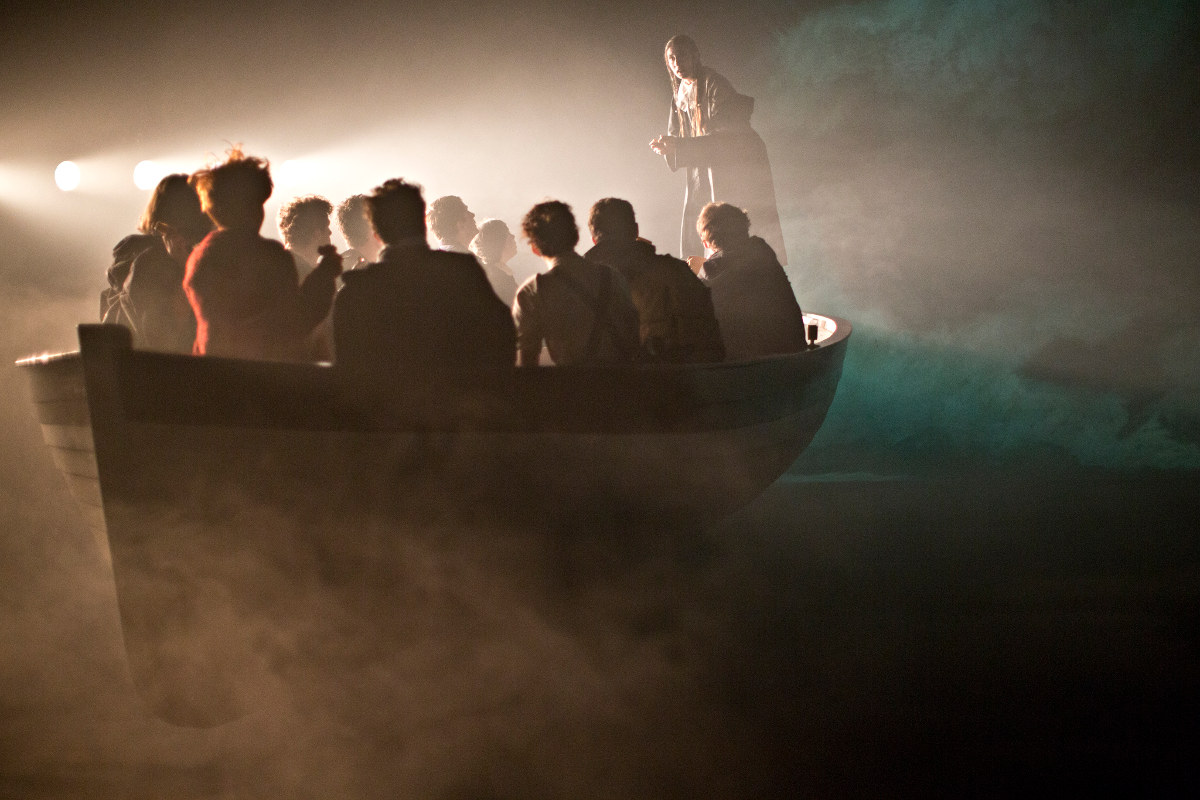In his work with the Théâtre National de Strasbourg’s Groupe 42, Thomas Jolly decided to embark these young artists on a “behind closed doors encounter in the middle of the ocean”.
The main question posed in it, and a rather cruel one at that, takes us to the very core of theatre, collective art and the art of the collective: what the human being, deemed as being sociable in nature, calls being together. “In 1940”, wrote Georg Kaiser, “a steamboat carrying children from bombed towns and cities in England was hit by a torpedo in the open sea.” From this simple, tragic fact, the German playwright (1878-1945) conjured up a sparse, pared-down piece of theatre in which the history of humanity is played out in condensed form.
The piece opens with a heart-rending shipwreck scene. The arrival of dawn brings with it the discovery of a sole lifeboat carrying twelve survivors: six boys and six girls. None of them looks to be older than thirteen years old. Two of them stand out in particular. Ann hugs her thermos flask of still-hot milk close to her. Allan remembered to bring his scarf. They are the first to wake up. “Allan and Ann”: the sound of their two names pronounced together rings out as if they were “alone in the world”. Indeed, as they contemplate the sea, it is towards the first couple, Adam and Eve, more so than Noah, survivor of the Flood, that their thoughts undoubtedly turn. When the other children wake up, Allan’s words are just what it takes. With at least three days between them and the nearest coastline, they will have to start rowing and share the meagre emergency rations stored onboard. ‘Share and share alike’ is precisely the rule that they all spontaneously adopt: each and every one of them drinks a few sips of milk from the beaker handed round to them by Ann. Are children not the very essence of innocence? The children themselves believe so. Ann’s charitable outlook and Allan’s tireless energy work wonders in keeping spirits up high. Indeed the discovery of a final passenger, hidden at the stern under the folds of a canvas, appears at first to attest to this. It is not until the second day, when it is time for the children to get ready to eat “together”, that Ann suddenly realizes there will be thirteen of them from now on. “Thirteen!”
Everything is now set to change. Thirteen is the unlucky number, a curse, and the minuscule crack through which Ann reintroduces the law of adults by invoking “Jesus and his twelve apostles”... In the eyes of Thomas Jolly, beneath its apparent clarity, Kaiser’s text brings to the surface “the mechanisms of monstrosity” via which “the splitting up of a community, struggle for power, and the might of indoctrination...” take hold. It is as though humanity, condemned to repeat itself, is unable to build itself up and come together unless a sacrifice of some sort is made. Or as though the sublime utopia of an open community almost inevitably leads to the shutting down of true or real society - accompanied by a sharing of a different kind: not milk, but bloodshed, crime and the law of silence... Is there any way we can escape from the clutches of History? What forms the basis for social ties: collective solidarity, or the exclusion of a scapegoat? This little known play, one of the last in a string of works from the 1920’s which made its author the undisputed master of expressionism, had an immediate effect on Thomas Jolly. For the director, the work poses essential questions about our own nature, history and - unfortunately - “our present day”.
Cast
French Translation Huguette et René Radrizzani
settieng Heidi Folliet, Cecilia Galli
collaboration Marie Bonnemaison, Léa Gabdois-Lamer, Julie Roëls
costumes, make-up Oria Steenkiste
lights Laurence Magnée
collaboration Sébastien Lemarchand
music Clément Mirguet
sound Auréliane Pazzaglia
collaboration to the direction Mathilde Delahaye, Maëlle Dequiedt
artistic support Thibaut Fack (setting), Clément Mirguet (sound), Antoine Travert (lights)
Les décors et costumes ont été réalisés aux ateliers du TNS.
production La Piccola Familia
coproduction Théâtre National de Strasbourg
about 1h45
,






